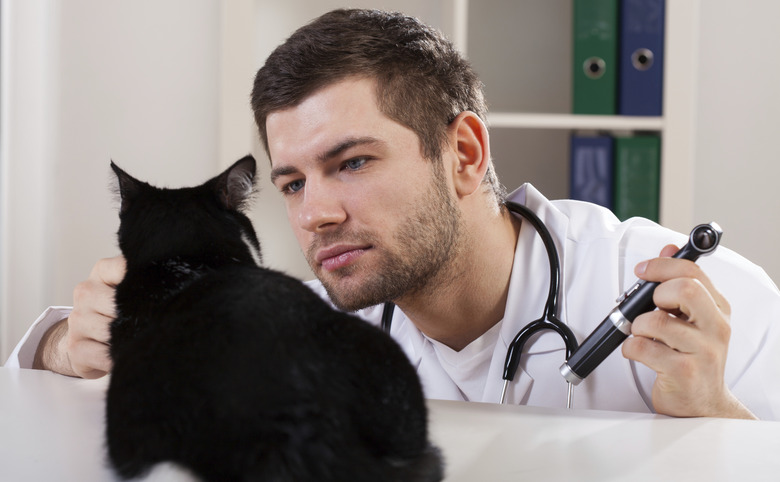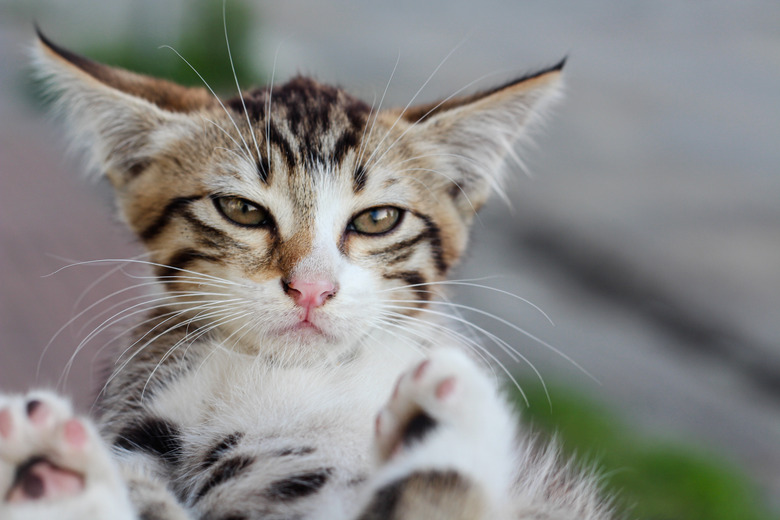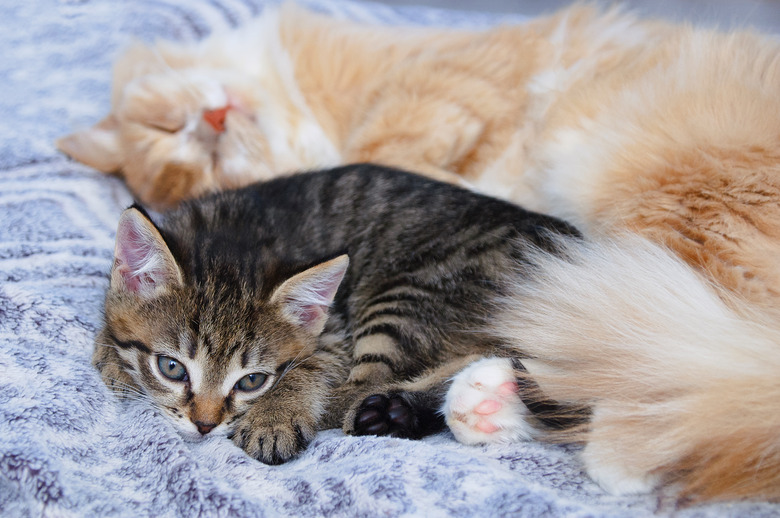How To Get Rid Of A Cat's Yeast Infection
Before you can get rid of a cat's yeast infection, it's important to determine the type of yeast causing the problem. While a home remedy such as organic apple cider vinegar might help a mild infection, your cat is better off with professional care to get the best medication or ear drops for cats. If you suspect your cat has a yeast infection, take him to the vet for diagnosis and treatment.
Yeast infections in cats
Yeast infections in cats
You've got yeast on your skin, and so does your cat. Different types of this fungus are found on and within the body. It's only when common yeasts multiply too rapidly and colonize that infection results. Feline yeast infections, especially if recurring, can be signs of an underlying disease or compromised immune system. In addition to diagnosing and treating the yeast infection, your vet will conduct blood and urine tests to determine if other ailments are causing the excessive yeast production.
Cat yeast infection in the ear
Cat yeast infection in the ear
Ears are perhaps the most common feline body part for a yeast infection. Symptoms include head shaking and scratching at the ear, often accompanied by a bad odor. The ear infection, formally known as otitis, can affect either the outer, middle, or inner ear. Your vet will take a sample of the ear exudate to determine the yeast involved.
While ear cleaning is part of the treatment, severely affected cats might require anesthesia for a thorough cleansing. Your vet will prescribe topical antifungal ear drops for cats to kill the yeast, along with cat ear infection medication to eradicate ear mites or any additional causes of otitis. The infection should clear up with treatment in a week or two.
Malassezia dermatitis in cats
Malassezia dermatitis in cats
The yeast Malassezia pachydermatis lives on the cat's ears and skin. Too much of the yeast can cause Malassezia dermatitis, with symptoms including hair loss, redness, skin irritation, greasiness, scaling, and a foul odor. Sometimes, the affected skin gets darker and thicker — the literal meaning of pachydermatis is "elephant skin."
Other infections, allergies, and liver or pancreatic disease can trigger the Malassezia yeast overgrowth in cats. In the Sphinx cat, there could be a genetic predisposition.
Once your vet determines that Malassezia is the culprit by testing her skin and blood, she might prescribe a medicated shampoo to eradicate the yeast. She'll likely prescribe a topical medication for the skin, along with antibiotics if your cat is battling a skin infection. Your vet must treat any underlying condition related to Malassezia proliferation.
Feline candidiasis infection
Feline candidiasis infection
Candida yeast is normally found in a cat's nose, ears, and mouth and throughout his intestinal tract. If this yeast grows out of control — generally in felines with compromised immune systems — the result is candidiasis.
The infection can occur primarily in one area or spread throughout the entire body. Excess candida in the ear creates symptoms common to other ear infections. If in the mouth, affected cats might drool incessantly. Urinary tract infections can result from candida. If this yeast colonizes in the skin, lesions appear. In any candidiasis infection, the cat might run a fever.
Your vet will perform a biopsy or check a urine sample to diagnose candidiasis. She also might diagnose diabetes via a blood test, since candidiasis is a sign of this disease. Since immunosuppressed cats are most vulnerable, treatment includes food and supplements to boost the immune system, treatment of any underlying diseases, and application of antifungal cream on skin lesions.


